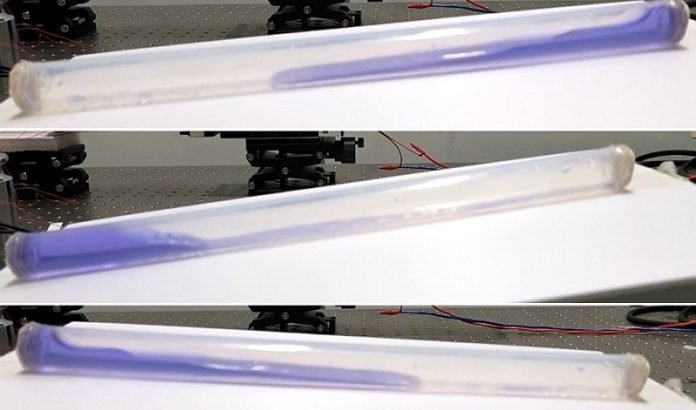
Ocean waves are not just for surfing anymore; they could be the key to unlocking a new source of clean energy.
Researchers have found a clever way to get more power from the ocean’s waves, making it easier to turn the sea’s natural rhythms into electricity.
This could help power everything from coastal cities to remote ocean equipment, all without harming the environment.
The team’s breakthrough involves a special device that captures “blue energy” from waves.
This device, known as a liquid–solid triboelectric nanogenerator (TENG), works by converting the movement of water inside a tube into electric power.
Imagine a tube half-filled with water; when the tube tilts back and forth, the water sloshes around, and this action can generate electricity.
Traditionally, these TENG devices had a major flaw: they didn’t produce enough electricity to be widely useful. But the researchers, led by Guozhang Dai, Kai Yin, and Junliang Yan, thought of a simple yet effective improvement.
They moved the part that collects energy, called an electrode, from the middle of the tube to the end where the water hits hardest when the tube rocks.
It’s a bit like putting the catcher where the baseball is most likely to fly in a game of catch.
To test their idea, the researchers built two TENG devices using clear plastic tubes and copper foil as the electrode.
One device had the electrode in the traditional center position, while the other had it at the end.
Then, they filled the tubes with water and set them on a benchtop to rock back and forth, mimicking wave motion.
The results were exciting. The device with the electrode at the end produced more than double the electricity of the traditional setup. In a vivid demonstration, this energy was enough to power a string of 35 LED lights, blinking on and off as the water moved.
This simple tweak could mean big things for harvesting energy from the ocean.
The researchers envision their improved TENGs being used to collect wave energy on a larger scale, helping to power coastal communities, charge batteries for underwater research equipment, or even support underwater communication systems without needing cables.
The beauty of this invention lies in its simplicity and potential impact.
By tapping into the constant power of ocean waves, we could access a vast and renewable energy source, bringing us one step closer to a cleaner, more sustainable future.
The study can be found in ACS Energy Letters.



